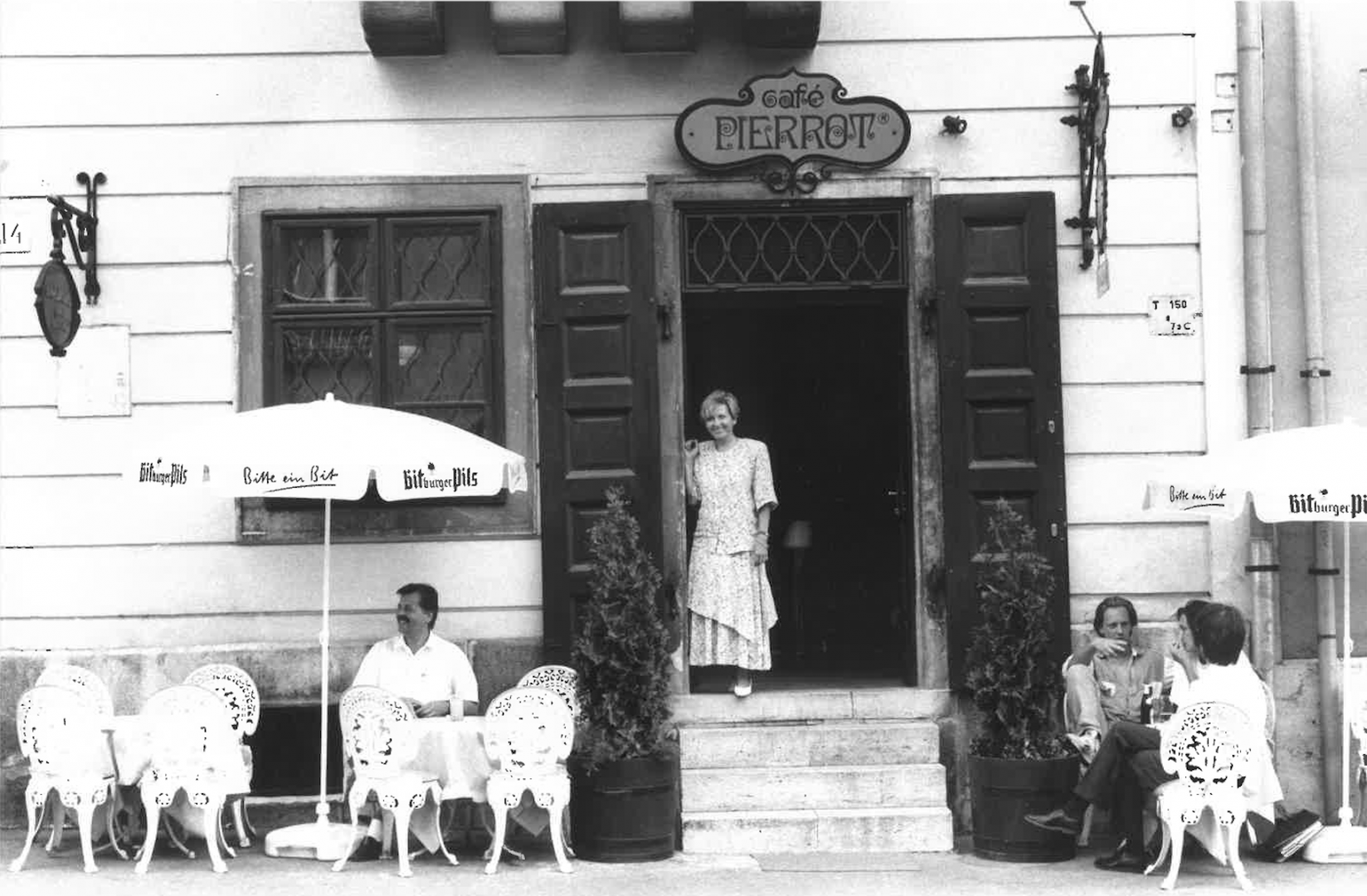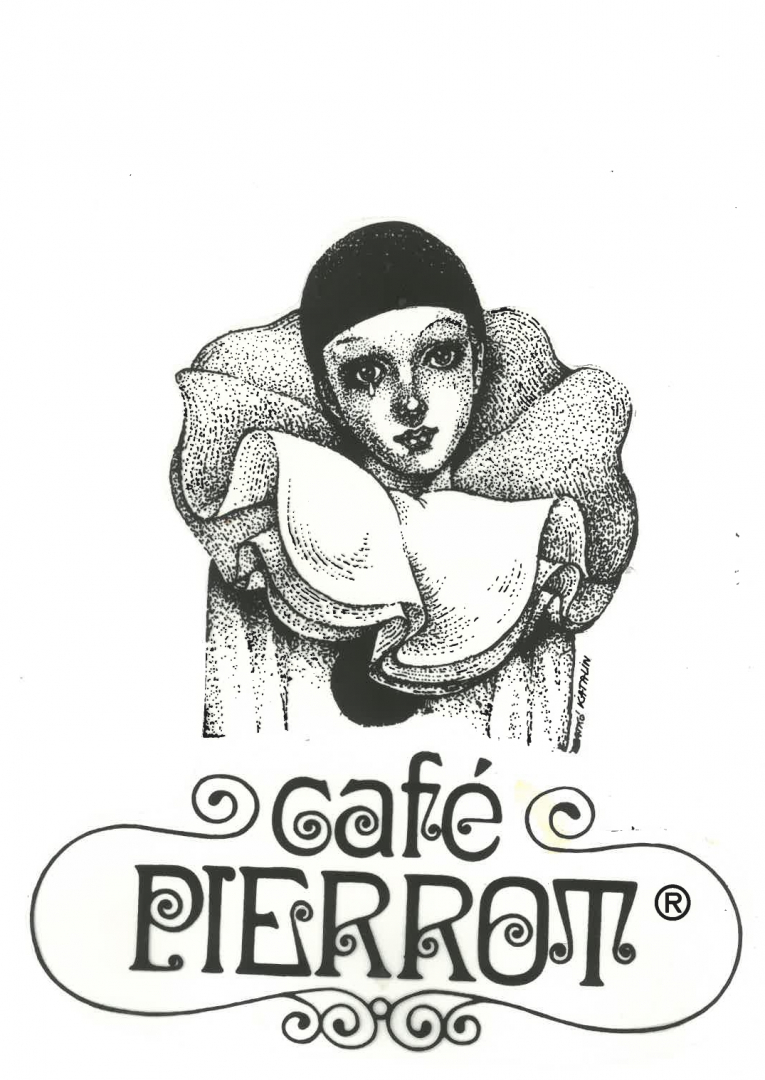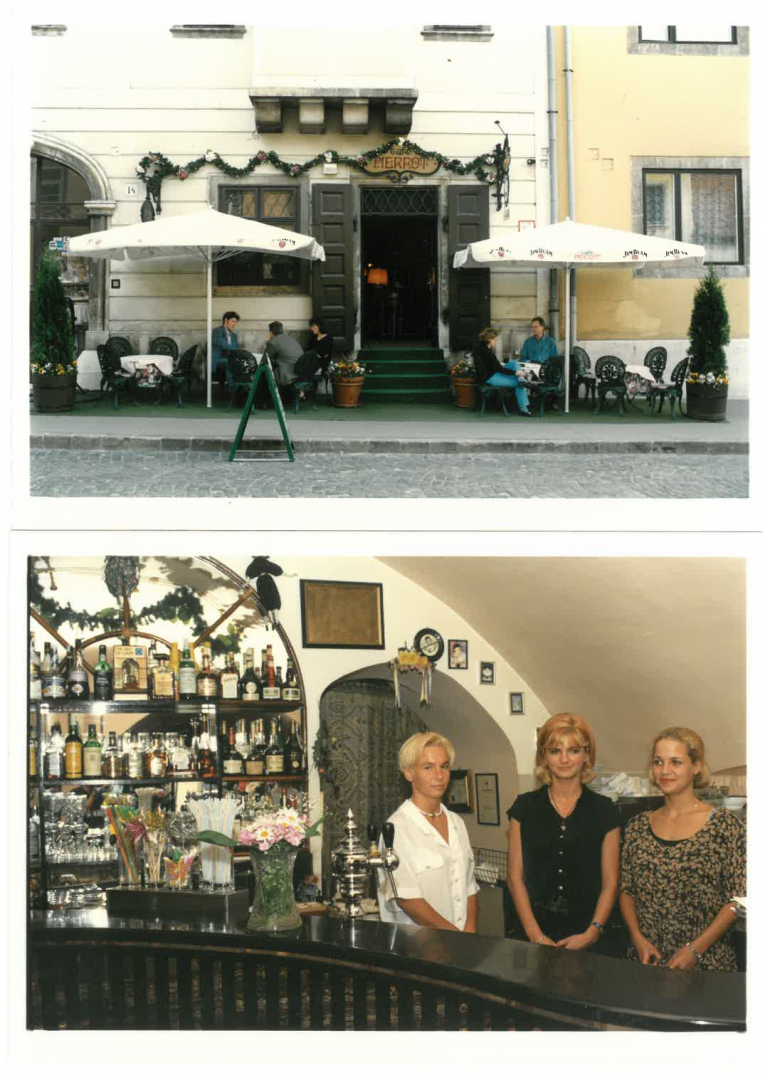
The beginnings
The layout of the Castle District is easy to navigate: four longitudinal streets parallel to the Danube that cross part of the castle wall. When one climbs up the hill from Széll Kálmán Square they first encounter the former Táncsics Prison. This leads—only by foot, keep in mind—to the Hilton Hotel next to Matthias Church.
One of the first houses, at the beginning of the street, is number 25. With its two windows on the ground floor, and doors lined with flower boxes, it stands modestly among the numerous monumental buildings of the area. Although it resembles an old-fashioned house, maybe where a writer or painter and their family would live, those who enter will instead find themselves in Pierrot, a hyper-modern gastronomy haven.

Ilona Zsidai and his husband, Peter often walked around the Buda Castle in the early 1980s. Peter was a Hungarian representative of Swissair, then the national airline of Switzerland, and Ilona the public relations and marketing chief of HungarHotels, which provided accommodations in far-flung parts of the world. The couple, who loved eating and traveling, were thrilled when during one of their jaunts they learned that there was a ground-floor retail space on Fortuna Street available for rent.
"We could start something with this," they thought. Luckily, their application was approved, and the space became Café Pierrot, which opened quietly on October 21, 1982.
Through their vast circle of friends, word of mouth slowly spread the business. This was unusual for Ilona, who as a leader at HungarHotels was accustomed to relying on the Hungarian advertising industry.
Pierrot was a curiosity in the eighties
because it opened during socialism, a time when restaurants were typically launched only by the state. It quickly became a favorite of artists and diplomats—much later, the Australian Prime Minister would manage to wander away from his bodyguards at the Buda Castle to chat at the bar—because its owners gave it a fresh, cosmopolitan vibe that contrasted with the rest of the city’s restaurants.
"It could have been anywhere from Paris to Vienna," recalls Ilona. “Interestingly, state security never wanted to know about us. We were somehow an island.
.jpg)
Today, the front of the restaurant is oblong and narrow, but a bar was there then with a large staircase in front of it and a family table on a pedestal. “Budapest’s most sophisticated residents all went to Pierrot in the nineteen-eighties. They were queuing between the bar counter and the stairs as they do at Spíler's bar in Gozsdu Courtyard now,’ explains Ilona. “At first, the restaurant's reputation was enjoyed just by Hungarians, but eventually it spread to hotels and business travelers came to eat there.”
Daily life
Foreigners, arriving in their black cars, cheered that there was finally a modern hangout to savor and this popularity led Pierrot to expand beyond its café and bar roots. In the early nineties, although the kitchen was compact, 10-15 dishes were served.%20(1).jpg)
| “There wasn't a weekend that we didn’t have ambassadors at dinner or they wouldn't come to us after the theater. We made the first menus based on what they wanted. There were nice places in hotels back then, but the atmosphere was completely different. There were not many restaurants where Hungarians and foreigners came together,” says Ilona. | “We never waited comfortably for something to happen, but rather went ahead. At that time, we signed a contract with a German brewer who helped me equip the entire kitchen with the most modern equipment.” |
The youth

At first, Ilona and Peter didn’t think that Pierrot would be an economically fitting restaurant for Budapest youth, but drawn to Ilona’s wanderlust and impressive entrepreneurial drive, they came anyway, a slew of college students now in their fifties, who rhapsodized about Pierrot to their family.
“They were happy to talk to me. Probably they felt the love radiating towards them. These young people became our biggest messengers, telling their parents and grandparents about this place where they could enjoy a club sandwich, an imported beer, or a glass of Campari.”
For example, the son of Zoltán Szabó, a cardiac specialist who performed the first heart transplant in Hungary and was the director of the Cardiology Institute in Városmajor, was a college student at the time and often sat at the bar. When there was a staff shortage, without hesitation he asked if he could help with the dishes.
There was also the historian Tamás Katona, whose large circle of scientist friends flocked to Pierrot. It became a meeting place for everyone in the intellectual world, a prideful opportunity to show that because Pierrot was a private initiative, they were free to do as they pleased.
Stars(1).jpg)
“Pierrot was a center of political, cultural, and social life at that time. We didn't use words like ‘celebrity’ then, but we had a lot of guests who were known for film, theater, and television,” says Ilona, pointing out such clientele as cinematographer Péter Kende and actors István Iglódi and József Madaras. (1).jpg)
Anthony Perkins came, and so did Christopher Plummer and Jeremy Irons, who dined almost nightly in Pierrot’s garden during a film shoot a few years back. Adolph Green, who co-wrote Singin’ in the Rain, often played the piano, and Roger Moore, a regular, asked that Pierrot’s pianist, Joseph Sárközi, play for his 80th birthday. Pierrot’s walls are covered in photos and signatures of countless other well-known names, including Robert De Niro, Bernie Ecclestone, Harrison Ford, Eva Mendes, Ryan Gossling, Salman Rushdie, Melanie Griffith. AC/DC, Depeche Mode, Deep Purple, Faithless, Anthony Hopkins, and former New York governor George Pataki.
Today, Pierrot has expanded its role as a fine dining restaurant and supplier of bakery items to other restaurants around the city. Peter and Ilona’s empire has also grown, with the Zsidai Group furthering its hold on the Castle District with a slew of restaurants and hotels, and making its mark on Budapest neighborhoods beyond.
Learn more about Zsidai Group's 40-year history through 40 short stories.
Zsidai 40


